 Image search results - "painting" Image search results - "painting" |

Kobuntei Villa was originally built in 1842 by Tokugawa Nariaki (1800-1860), the ninth Lord of Mito. It was his summer villa.
|
|

Kobuntei Villa, fusuma sliding door with painting of plum trees
|
|

Kobuntei Villa, fusuma sliding door with painting of azalea
|
|

Kobuntei Villa, fusuma sliding door with painting of fall leaves
|
|

Kobuntei Villa
|
|
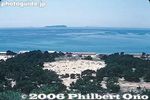
Zenigata Sunae giant sand sculpture of an old coin. 銭形砂絵The sculpture is maintained twice a year.
|
|

Kobuntei Villa
|
|

Kobuntei Villa, fusuma sliding door with painting of maple leaves
|
|

Kobuntei Villa
|
|

Kobuntei Villa
|
|

Kobuntei Villa
|
|

Kobuntei Villa
|
|

Kobuntei Villa, fusuma sliding door with painting of cherry blossoms
|
|

Kobuntei Villa
|
|

Cherry Blossom Room, Kobuntei Villa
|
|

Paintings on ceiling inside Hondo worship hall.
|
|

Painting on ceiling of Hondo worship hall.
|
|
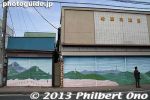
Hanno's main street has a few shutter art.
|
|
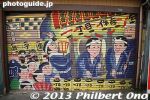
Hanno's main street has a few shutter art. Saitama.
|
|

Hanno's main street has a few shutter art.
|
|
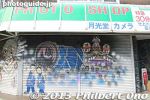
Hanno's main street has a few shutter art.
|
|
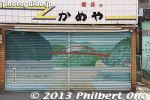
Hanno's main street has a few shutter art.
|
|
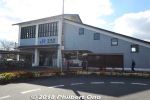
JR Koka Station on the JR Kusatsu Line opened its new station building in Nov. 2005. Resembling a farmer's warehouse on the outside, the inside has a number of surprises. MAPNorth side
|
|

JR Koka Station north (Kitaguchi) side.
|
|

Ninja statue in front of JR Koka Station, Shiga Prefecture.
|
|
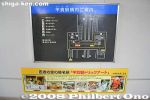
Map of Koka Station and a guide to the "Koka Station Trick Art." Seven wall murals of ninja paintings inside the station.
|
|
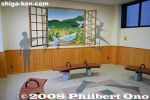
On the north side, the waiting room has this large painting. The shadow areas is where you can stand and pose for a picture.
|
|
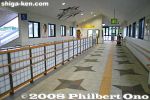
Koka Station's 2nd floor corridor has shuriken (ninja throwing knives) design on the floor.
|
|
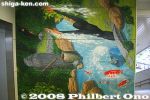
Wall mural sideways, showing ninja and a river.
|
|
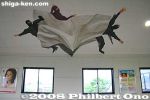
Ceiling painting of ninja appearing from a cloak. You can have someone "touch" the tip of the cloak.
|
|
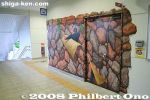
Near the turnstile entrance. These ninja wall murals are called "Trick Art." They look three-dimensional and you can interact with the paintings. You can pose within the painting itself. A brilliant idea. トリックアート
|
|
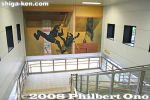
The stairway on the south side of Koka Station has this dramatic mural of ninja in action.
|
|
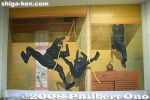
Ninja painting in Koka Station.
|
|
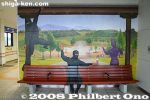
This painting uses a real bench where you can sit down and pose with the ninja. JR Koka Station on the JR Kusatsu Line, Shiga Prefecture.
|
|
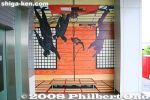
Suspended ninja in a painting next to the elevator. You supposed to sit on the floor and make like the ninja is coming after you.
|
|
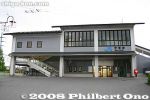
JR Koka Station, south entrance.
|
|
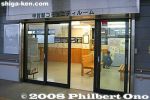
The south entrance has community room serving as an exhibiiton space. It also displays medicines made by Koka medicine makers. Many ninja families in Koka were medicine makers.
|
|
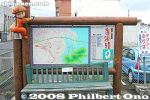
Sign on south side of Koka Station. There's a ninja character climbing up the sign, but the map does not show the ninja village or ninja house.
|
|

All the paintings are painstakingly hand-painted replicas of the original art. Nagoya Castle's Hommaru Palace.They have excellent records and photos of the original palace (floor plans, etc.) so they are working to reconstruct the palace as close to the original as possible. Magnificent.
|
|

Leopard at Nagoya Castle's Hommaru Palace.
|
|

Sliding door painting in the Omote Shoin (表書院) Main Hall's Ichi-no-Ma Room 一之間. Nagoya Castle's Hommaru Palace.
|
|

The Omote Shoin (表書院) Main Hall's Jodan-no-Ma Room which is reserved for daimyo of Nagoya Castle. 上段之間.
|
|
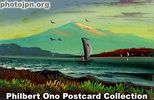
Oil-painted card of ocean and mountain. Apparently by the same artist as the preceding card.
|
|
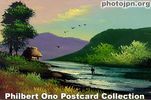
Oil-painted card of river. Apparently by the same artist as the preceding card.
|
|
|
|
|
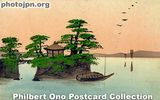
Oil-painted card of Matsushima. Matsushima is a picturesque group of pine tree islands near Sendai, Miyagi Pref. The island pictured is one of the main islands and a major tourist stop.Along with Amanohashidate in Kyoto and Miyajima in Hiroshima, Matsushima is known as one of the three most famous views of Japan (Nihon Sankei).
|
|
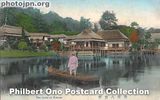
Tea house garden in Hikone, Shiga. This cozy Japanese garden has tea houses. It is directly behind Hikone Castle in Shiga Prefecture. Hikone Castle was the home of Naosuke Ii, the high official who met Commodore Perry.Today, this garden still looks pretty much the same. It was even used for a garden scene in the TV mini-series "Shogun." See photos here.
|
|
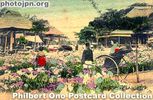
Iris Garden at Horikiri, Tokyo. This card is made of balsa wood. It shows a woman arriving at the garden in a rickshaw. I've seen this photo printed on paper postcards as well. The garden still exists in Tokyo and it's still famous for irises.See photos of the garden today. It's still famous for irises that bloom in June. Hand-colored postcard.
|
|

Due to financial reasons, the Suijo Hachiman Shrine Taiko Drum Dance is held only once every 5 years. I went to see it on Sept. 23, 2009. MAP
|
|

In a local community center in Suijo, they started at 6 am to paint the bellies and thighs of 15 men called yakko. Yakko were manual laborers employed by the samurai. They carried luggage during trips, etc.
|
|

This taiko dance is unique for having these yakko men painted. It takes about 30-45 min. to paint a belly.
|
|

They also painted the thighs.
|
|

And faces.
|
|

After the paint job, they are dressed in a belly band and happi coat.
|
|

Each man had a different painting.
|
|
|
|

Tiger man.
|
|

Deva god
|
|

Most were happy to pose for the hordes of retiree amateur photographers.
|
|

Yakko posing 奴
|
|

The yakko-furi men chanted, "Ei! Ei!"
|
|

Yakko men carried some luggage and sometimes passed it on to other men. This is Suijo's main road.
|
|

You can see yakko-furi men in samurai processions such as daimyo gyoretsu festivals reenacting the sankin kotai procession.
|
|
|
|
|

The men wore kabuki-style make-up (called kumatori 隈取り) on their faces.
|
|

Yakko-furi men arrive.
|
|
|
|
|
|
|

The art theme was "Lake Biwa: Life-giving Water." The show was from June 1 to July 20, 2008.
|
|

"Lake Biwa: Life-giving Water"
|
|

Lake Biwa fishes
|
|
|

The tent art was 170 meters long on the same road, stretching from the temple to Takamiya Primary School.
|
|

Baikamo flowers of Samegai.
|
|

Created by Ibuki High School's art dept.
|
|

Various high schools in Shiga, mainly from Hikone, participated in the tent exhibition.
|
|
|
|
|

Takamiya Primary School 高宮小学校
|
|
|
|
|